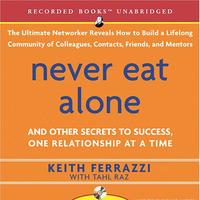18. CHAPTER 3 - Step Two: Putting Goals to Paper
Within a couple of weeks, Jamie was on her way.
She started to see the symbiotic relationship between goal setting and reaching out to the people who can help us achieve those goals. The more she accomplished, the bigger her teaching network grew. The bigger her teaching network grew, the closer she came to accomplishing her three-year goals. Ultimately, the third stage helps you assess which of the strategies I'll show you in the following chapters will be most successful.
With some people, it will require you cold-call them (which we'll talk more about later). Others you'll be able to reach through friends of friends; still others might best be acquainted through a dinner party or conference. I'll teach you how to utilize all these methods and more. Jamie is now a tenured high school history teacher in one of the best high schools in the country, in Beverly Hills, California.
And she loves the job. This process can be used by almost anyone, whatever your career.
After completing the worksheet, you'll have a mission. You'll have the name of a flesh-and-blood person who can help you take the next step in achieving that mission. And you'll have one, or perhaps several, ways to reach out to that person. The purpose of this exercise is to show that there is a process, a system if you will, involved in building a network.
It's not magical; it's not reserved for a select few born with an inherent gift for being social. Connecting with others really just involves having a predetermined plan and carrying it out, whether you want to be a ninth-grade history teacher or start your own business. Moreover, you can apply the worksheet to every aspect of your life: to expand your network of friends, further your education, find a lifelong partner, and search for spiritual guidance.
Once you have your plan, post it in a place (or places) where you will see it on a regular basis.
Share your goals with others. This is very powerful and perhaps one of the most rewarding aspects of having clear goals—there are hidden opportunities waiting to be accessed in everyone if you just tell them what you want. Fill this sheet out now, before going on to the next chapter.
I like to keep some variation of it in my Palm to remind myself regularly what I need to be accomplishing, and whom I need to reach out to. A few years ago, I laminated a small version of the sheet and kept it in my wallet. But your goals must be in writing.
Have the conviction to put your intentions to paper. An unwritten wish is just a dream. In writing, it's a commitment, a goal. Here are a few other criteria to consider when filling out your Networking Action Plan, or NAP:
- Your goals must be specific.
Vague, sweeping goals are too broad to be acted upon. They must be concrete and detailed. Know what steps you'll take to achieve your goal, the date by which it will be accomplished, and the measurement you'll use to gauge whether you've achieved the goal or not. I tell my salespeople that setting a goal like "I'm going to have my best quarter ever" is not enough. Will they make $100,000 or $500,000? - Your goals must be believable.
If you don't believe you can reach them, you won't. If your goal is to increase the revenues of your business to five million dollars in a year, and you only achieve revenues of one million, you're setting yourself up for failure. Instead, set your goal at half a million dollars for the year—and beat the heck out of it. - Your goals must be challenging and demanding.
Step out of your comfort zone; set goals that require risk and uncertainty. And when you achieve your goal, set another one. One of the best salesmen I've ever met is a man my father knew named Lyle, who sold books door-to-door. He would set annual sales goals for himself, write them down, and place them wherever he could: in his wallet, on his refrigerator, in his desk. Inevitably, he'd reach his goal months ahead of schedule. Then he'd simply write down another one. The man was never satisfied. What matters is the goal setting, Lyle would say, not the goal getting. He may have been the only door-to-door book salesman in Pennsylvania—or anywhere else, for that matter— who died a rich man. Next, take ACTION It's called a Networking Action Plan for a reason.
To prepare yourself to run a marathon, you must get out there and jog every day. With a plan in place, it's up to you to start reaching out. Every day!

